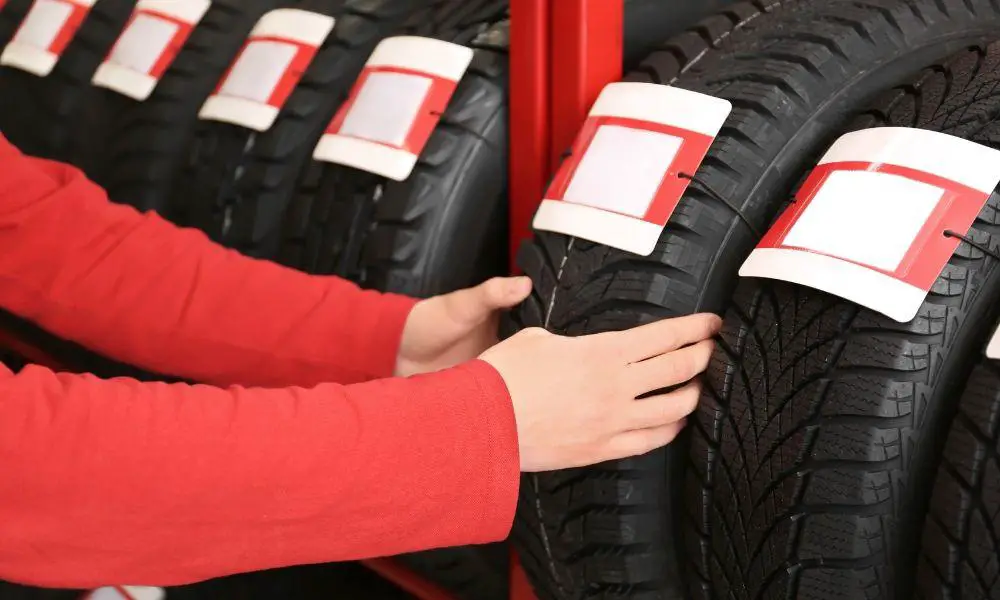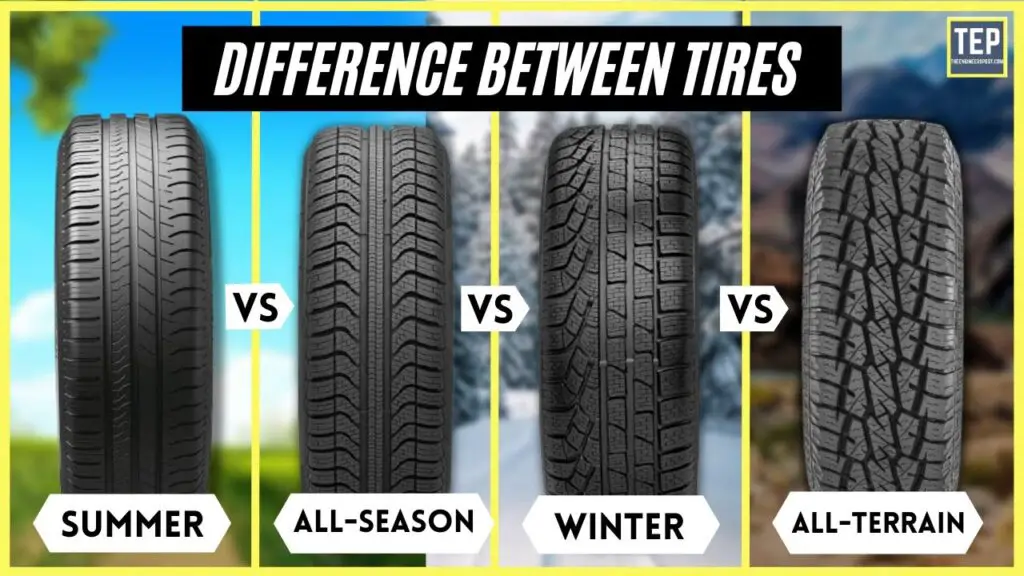Tires aren’t just rubber and tread; they’re the unsung heroes of your vehicle’s performance and safety. In this guide, we’ll unravel the critical role that tires play in the driving experience. Beyond being the mere connection to the road, tires impact handling, traction, and overall vehicle dynamics. As we embark on this journey, we’ll explore the essential factors pivotal in selecting the perfect set of tires.
From understanding sizes and types to navigating diverse driving conditions, choosing the right tires isn’t just about rubber—it’s about optimizing your car’s performance and ensuring a safer, smoother ride. Join us as we navigate the intricate world of tire selection, ensuring your vehicle rolls on the right wheels for every journey ahead.

Understanding Tire Specifications
Tire Size and Dimensions
The numbers and letters on a tire’s sidewall contain essential information about its size and dimensions. Let’s break down a typical tire size code like “P215/65R15” to understand its components:
- P – Indicates the tire type. In this case, it stands for “passenger vehicle.”
- 215 – Represents the tire width in millimeters. This is the measurement from one sidewall to the other, indicating the tire’s width when properly inflated but not loaded.
- 65 – Denotes the aspect ratio, which is the ratio of the tire’s sidewall height to its width. In this example, the sidewall height is 65% of the tire’s width.
- R – Signifies the tire construction type. “R” stands for radial construction, the most common type in modern tires.
- 15 – Indicates the diameter of the wheel or rim in inches that the tire is designed to fit.
So, for “P215/65R15,” you have a passenger tire that is 215 millimeters wide with a sidewall that is 65% of the width, designed to fit a 15-inch rim.
Load Index and Speed Rating
Load Index and Speed Rating are crucial factors in determining a tire’s performance capabilities.
- Load Index: This number corresponds to the tire’s load-carrying capacity. It indicates the maximum weight a tire can support when properly inflated. For example, a tire with a load index of 95 can carry a maximum load of 1521 pounds.
- Speed Rating: This letter indicates the maximum speed capability of the tire when it’s properly inflated and under the specified load. Speed ratings range from “A” (the lowest) to “Y” (the highest). For instance, a tire with a speed rating of “H” can sustain speeds up to 130 mph.
These ratings are essential for safety and ensuring that your vehicle’s tires are suitable for the intended load and speed requirements. Matching the appropriate ratings to your vehicle’s specifications is crucial for optimal performance and safety on the road.
Types of Tires

All-Season Tires
All-season tires are designed to provide a balance of performance characteristics suitable for a wide range of weather conditions and driving styles. They offer:
- Versatility: All-season tires are engineered to perform adequately in dry, wet, and light winter conditions. They aim to provide a smooth, quiet ride with good traction in various temperatures.
- Tread Design: Their tread pattern is optimized for a mix of conditions, featuring moderate tread depths and patterns that facilitate efficient water evacuation for improved grip on wet roads. They typically have a combination of biting edges for light snow traction.
- Year-Round Use: These tires are popular for drivers who don’t experience extreme weather conditions year-round. They offer convenience by eliminating the need to change tires with the seasons.
While they provide decent performance in various conditions, all-season tires may not excel in extreme winter or high-performance driving situations.
Summer vs. Winter Tires
Summer Tires
- Warm Weather Performance: Summer tires are optimized for warm weather conditions. They feature a tread compound that remains flexible in hot temperatures, providing enhanced grip and responsiveness on dry and wet roads.
- Tread Design: Their tread patterns focus on maximizing traction on dry surfaces, with fewer grooves for water evacuation compared to all-season or winter tires. This design boosts handling and cornering abilities in warm conditions.
Winter Tires
- Cold Weather Performance: Winter tires are specifically engineered for cold temperatures, ice, snow, and slush.
- Tread Design: Their tread compounds remain pliable in low temperatures, retaining traction even in icy conditions. The tread patterns have more sipes (thin slits) and deeper grooves to bite into snow and improve grip on slippery surfaces.
Choosing between summer and winter tires depends on the climate you live in and your driving habits. Winter tires offer superior performance in cold, snowy conditions, while summer tires excel in warm weather, providing better traction and handling on dry and wet roads. For regions with extreme weather, using dedicated summer and winter tires for their respective seasons is recommended for optimal safety and performance.
Specialized Tires for Specific Needs
High-Performance Tires
High-performance tires are engineered to offer superior handling, traction, and speed capabilities, primarily targeting sports cars or enthusiasts seeking enhanced performance. Key features include:
- Enhanced Grip: These tires use advanced tread compounds that provide increased grip on both dry and wet surfaces. The rubber compounds are formulated for better traction, enabling improved acceleration, braking, and cornering abilities.
- Stiffer Sidewalls: High-performance tires often have stiffer sidewalls, enhancing responsiveness and stability during high-speed maneuvers.
- Wider Tread Patterns: The wider tread patterns maximize contact with the road, optimizing grip and handling.
These tires offer exceptional performance but might have a shorter lifespan due to their softer compounds and aggressive tread patterns. They’re best suited for performance-oriented driving rather than longevity.
Off-Road and All-Terrain Tires
Off-road and all-terrain tires are designed for vehicles used in rugged terrains and off-road adventures. Their features include:
- Aggressive Tread Patterns: These tires have deep, aggressive tread designs with larger voids between tread blocks. This allows for better traction in mud, gravel, dirt, and rocky surfaces.
- Reinforced Sidewalls: They often come with reinforced sidewalls to withstand impacts from rocks and rough terrain, reducing the risk of punctures.
- Durable Construction: Off-road tires are built with durable compounds and materials to withstand harsh conditions while providing traction and stability.
These tires sacrifice some on-road comfort and noise for their off-road capabilities and are suitable for drivers who frequently navigate challenging terrains.
Considerations for Driving Conditions
Wet and Dry Handling
Tire tread patterns and compounds play a crucial role in performance under varying conditions:
- Wet Conditions: Tires optimized for wet conditions have deeper grooves and channels to disperse water and reduce the risk of hydroplaning. The tread compounds are designed to maintain grip even on wet surfaces.
- Dry Conditions: Tires for dry conditions often have shallower treads and a firmer rubber compound, maximizing contact with the road for better traction and handling.
Noise and Comfort
Tire noise levels can impact comfort, especially during longer drives. Tires with aggressive tread patterns or specific designs for performance might generate more noise than standard or touring tires.
However, advancements in tire technology aim to minimize noise while maintaining performance characteristics, offering a balance between comfort and capability. Touring tires, for instance, are designed to prioritize comfort and low noise levels for extended drives.
Cost Considerations
Tire prices vary based on several factors, including:
- Type of Tire: Different tire types (all-season, high-performance, off-road, etc.) come with varying price ranges. High-performance or specialized tires often cost more due to their advanced technology and materials.
- Brand: Well-known brands or premium tire manufacturers usually command higher prices due to their reputation, quality, and often enhanced features or warranties.
- Quality and Features: Tires with advanced features, better traction, longer tread warranties, or specific performance enhancements might have higher price tags.
Balancing budget and quality involves considering factors like expected performance, longevity, driving conditions, and the specific needs of your vehicle. Opting for mid-range tires from reputable brands can often strike a good balance between cost and quality, providing decent performance and durability without breaking the bank.
Budget and Longevity
Longevity and Durability
The lifespan of tires depends on various factors:
- Tire Type: Different types of tires have varying lifespans. For instance, high-performance tires might wear out faster due to their softer compounds optimized for grip.
- Maintenance: Proper tire maintenance, including regular rotations, alignments, and maintaining proper tire pressure, significantly impacts longevity. Neglecting these aspects can lead to uneven wear and shorter tire life.
- Driving Habits: Aggressive driving, frequent high-speed maneuvers, or driving on rough roads can accelerate tire wear.
- Treadwear Warranty: Some manufacturers offer treadwear warranties. However, these warranties might not always reflect real-world conditions and might have specific terms and conditions.
Ensuring proper tire care, following recommended maintenance schedules, and driving responsibly can help maximize the lifespan of your tires. Regular inspections for wear and tear can also identify potential issues early, allowing for timely replacements and ensuring safety on the road.
FAQs
How Often Should I Rotate My Tires?
Rotating your tires is crucial for even tread wear and maximizing their lifespan. As a general rule of thumb, it’s recommended to rotate your tires every 6,000 to 8,000 miles, or as advised by your vehicle’s manufacturer. This routine maintenance practice helps distribute wear more evenly among all tires, extending their longevity and ensuring consistent performance.
If your vehicle has different tire sizes or types on the front and rear axles, rotating them becomes even more critical to maintain balanced traction and handling.
What’s the Best Way to Check Tire Pressure?
Monitoring tire pressure is essential for safety, fuel efficiency, and tire longevity. To check tire pressure accurately, follow these steps:
- Use a reliable tire pressure gauge. Digital gauges tend to be more accurate than analog ones.
- Check tire pressure when the tires are cold, as driving heats them, leading to inaccurate readings.
- Locate the recommended tire pressure for your vehicle (usually found in the owner’s manual or on a sticker inside the driver’s side door jamb).
- Unscrew the valve cap and firmly press the gauge onto the valve stem to get a reading.
- Compare the measured pressure to the recommended pressure. If it’s low, inflate the tire to the proper PSI using an air compressor. If it’s high, release air until it reaches the recommended level.
- Repeat the process for all tires, including the spare, and replace the valve caps securely.
Regularly checking and maintaining proper tire pressure ensures optimal performance, safety, and extends the life of your tires.
Wrap Up
Understanding tire specifications and choosing the right type can significantly impact your driving experience. From all-season versatility to specialized high-performance or off-road capabilities, each tire serves a unique purpose. Balancing budget with quality is essential, as is proper maintenance for longevity. Remember, regular rotations, proper inflation, and monitoring tread wear are key.
By grasping these nuances and considering your driving habits and conditions, you can optimize tire performance, safety, and durability for smoother journeys ahead.
